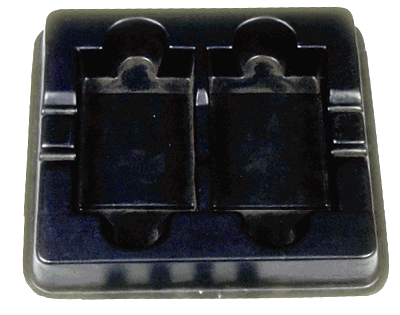
In the 1940s through the 1960s and beyond, a double deck Rummy game known as Canasta was very popular. To facilitate play of this game, commercial "deck holders" were made available. This example was donated to the collection in 1971.
The game appears to have been first developed in Uruguay after the Second World War. It spread rapidly throughout South America and then to the United States. Because it is a game that lends itself to tables of four players, in some quarters it superceded interest in the game of Bridge. There are a number of variations of Canasta - one in keeping with the Latin American origins, is called Samba.
The deck holder pictured is 15.5cm long x 17cm wide x 2.4cm high. It is made of plastic. The platform has 2 compartments.
Normally, in the play of the game, after dealing cards to players, the "stack" is placed in the left compartment, and players put their "discards" in the right compartment. Indentations around each compartment enable players to "draw" cards from either compartment. The holder is unmarked, thus the maker is unknown. More elaborate equipment for this game has been available on the market for a number of years.
Instructions for play of the game can be found in any number of contemporary books on playing cards.
NOTE: This page was originally created and posted on the Web on April 2, 1998. Subsequently it has been modified and periodically updated. Last update: June 8, 2010